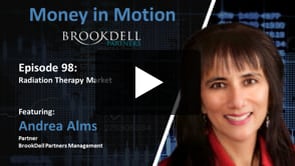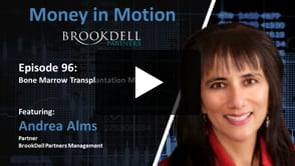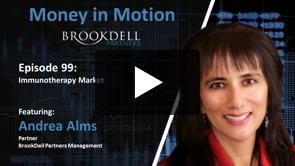Managed Futures Dashboard:
Top Managed Futures News, Listings, Member Posts, Managed Futures Daily Indices and more!
In August, Auspice AUM reached $500mm, a more than 2x increase within a year. In addition to strong growth in the Direxion Auspice COM ETF (NYSE), the only Morningstar 5-star rated commodity ETF, we have noted a significant uptick in institutional interest adding to our institutional base clientele.
Institutional investors, as we know, generally have a longer investment process. So, the recent change has come as no surprise. This month we saw the longer institutional investment process start to unfold.
"Ontario Teachers' Pension Plan looks at commodities for hedge against inflation. Teachers' net investments in commodities accounted for 12 per cent of the asset mix in the first half of the year, up from eight per cent at the end of 2020"(1).
Ontario Teachers is one of the most respected plans globally, posting an impressive 9.6% return since inception, and a 9.3% return over the most recent 10 years. Notably, they are known for being one of the most sophisticated investors, and often first movers. They were one of the early pioneers to embrace CTAs and managed accounts - their first CTA investment took place in the early 2000s, and then scaled up managed accounts from $250mm in 2008 to over $10bn in 2016.
It should come as no surprise that they are investing heavily in the space. But, they are not alone.
Texas TRS, an equally impressive teachers’ pension plan, has doubled their exposure to commodity hedge funds in the last year. In a recent Talking Hedge webinar that included Auspice CIO Tim Pickering, Hedge Fund portfolio manager Steven, Wilson (a 2021 Institutional Investor Rising Star) mentioned:
“I need to really think very hard about what type of strategies will do well when and if the regime changes because it’s not going to be the same people that did really well the last decade”(2).
“For me, what’s more exciting is the breadth and decorrelation of the commodity asset class. There’s not a lot of people trading this stuff anymore”(3) … “It’s just easier for folks to make money now. Contracts remain uncorrelated, and they can be very volatile which allows people to express risk without levering up”(4).
According to one database there are currently over 40 active commodity searches with institutional investors. A separate study of over 150 European institutional investors and wealth managers with a combined AUM of $USD 293bn found that “Over two thirds of institutional investors (67 per cent) expect the level of allocation into commodities to increase during 2021 and a further 32 per cent expect it to stay the same”(5).
Ontario Teachers CIO Ziad Hindo captured the sentiment: “What we know historically is that inflation is not really kind to traditional asset classes … stocks or bonds. Commodity prices, on the other hand, tend to rise when inflation is on an upward trajectory and provide a hedge against it”(6).
In hedging against inflation, there are few asset classes that have been as effective, and importantly impactful, as commodities. Consider a study released last month by Vanguard:
“Inflation-protected bonds are by their nature intended to hedge against inflation. But with a far lower beta to unexpected inflation (around 1), they would require a significantly higher portfolio allocation to achieve the same hedging effect as commodities”(7).
The benefits are well established, but there also considerable risks – commodities can be volatile, and common broad commodity indices BCOM and GSCI have had drawdowns of 74% and 88% respectively(8). What’s the most effective way to add commodity exposure to a portfolio?
For retail investors without the capacity to invest in CTAs and managed accounts, we’d recommend reviewing our March 2021 white paper “Positioning for the 2020s Commodity Bull Market – Select Your Exposure Wisely”. Tactical commodity ETFs can provide effective upside commodity exposure with managed downside risk.
For institutional investors, consider a final comment by Steven Wilson:
“95% of our exposure is systematic because you can cover a lot of different markets.” … “Systematic is the way to go, get as many markets as you can. And that’s actually been very successful for us”(9).
References
2. (41:22) https://www.youtube.com/watch?v=wlvDEP1uBrE&t=2540s
3. (13:53) https://www.youtube.com/watch?v=wlvDEP1uBrE&t=2540s
4. (14:20) https://www.youtube.com/watch?v=wlvDEP1uBrE&t=2540s
7. https://investornews.vanguard/the-potency-of-commodities-as-an-inflation-hedge/
8. Drawdowns refer to worst drawdowns from 2000 – July 2021
9. (28:50) https://www.youtube.com/watch?v=wlvDEP1uBrE&t=2540s
Disclaimer below
IMPORTANT DISCLAIMERS AND NOTES
Futures trading is speculative and is not suitable for all customers. Past results are not necessarily indicative of future results. This document is for information purposes only and should not be construed as an offer, recommendation or solicitation to conclude a transaction and should not be treated as giving investment advice. Auspice Capital Advisors Ltd. makes no representation or warranty relating to any information herein, which is derived from independent sources. No securities regulatory authority has expressed an opinion about the securities offered herein and it is an offence to claim otherwise.
QUALIFIED INVESTORS
For U.S. investors, any reference to the Auspice Diversified Strategy or Program, “ADP”, is only available to Qualified Eligible Persons “QEP’s” as defined by CFTC Regulation 4.7.
For Canadian investors, any reference to the Auspice Diversified Strategy or Program, “ADP”, or Auspice One Fund “AOF”, is only available to “Accredited Investors” as defined by CSA NI 45-106.
Today's Managed Futures Headlines:
Access Over 250K+ Industry Headlines, Posts and Updates
Join AlphaMaven
The Premier Alternative Investment
Research and Due Diligence Platform for Investors
Free Membership for Qualified Investors and Industry Participants
- Easily Customize Content to Match Your Investment Preferences
- Breaking News 24/7/365
- Daily Newsletter & Indices
- Alternative Investment Listings & LeaderBoards
- Industry Research, Due Diligence, Videos, Webinars, Events, Press Releases, Market Commentary, Newsletters, Fact Sheets, Presentations, Investment Mandates, Video PitchBooks & More!
- Company Directory
- Contact Directory
- Member Posts & Publications
- Alpha University Video Series to Expand Investor Knowledge
- AUM Accelerator Program (designed for investment managers)
- Over 450K+ Industry Headlines, Posts and Updates






